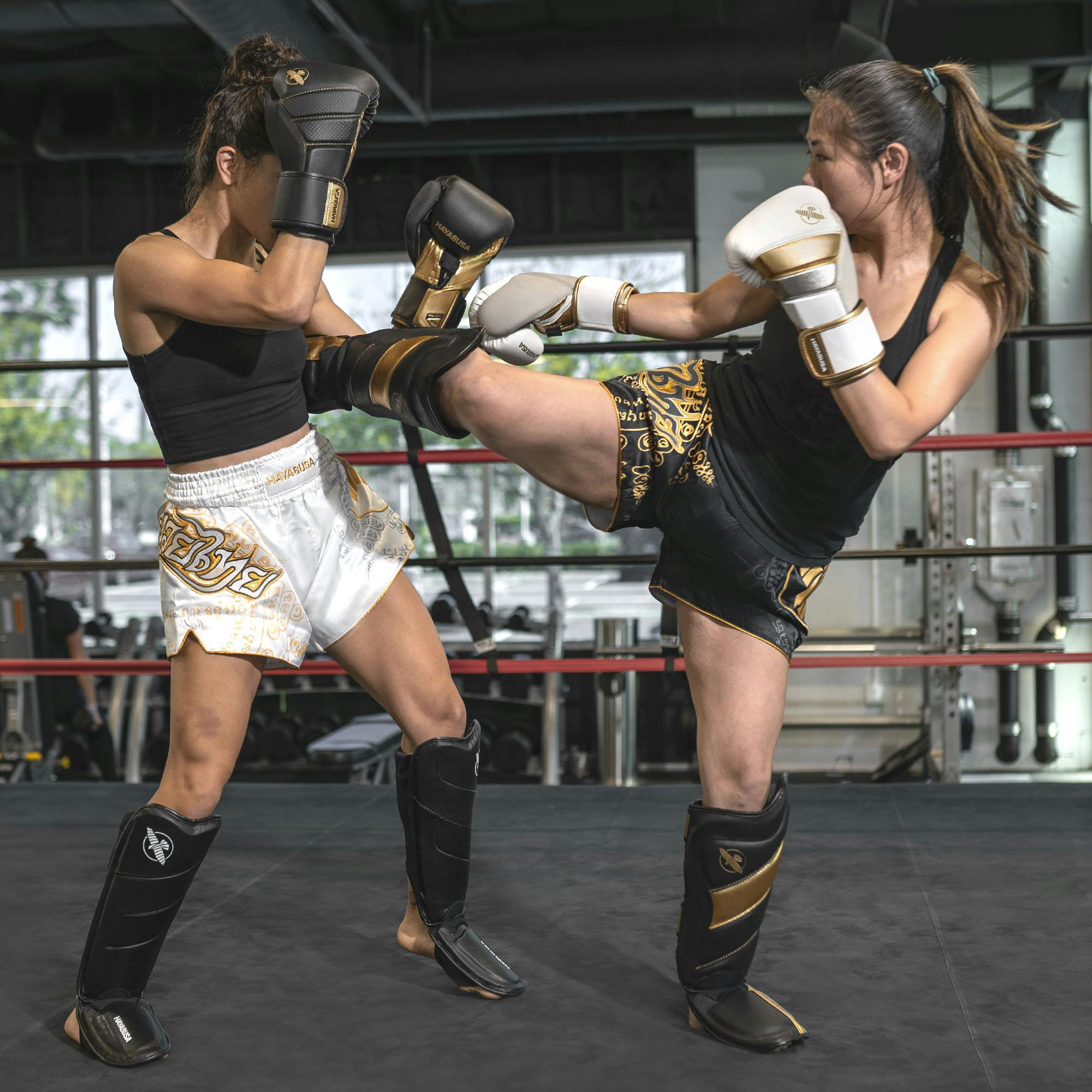THE HISTORY AND TRADITION OF MUAY THAI ARM BANDS AND HEAD BANDS
If you're a relatively new Muay Thai fighter, there's no doubt you have a number of questions.
For instance: Have you noticed the headband and armband worn by fighters? What do those items symbolize?
Traditional Muay Thai is a physical art form that showcases the beauty and struggle between two opposing forces. Rooted in the 1700s in Thailand, Muay Thai, also known as Thai Boxing or Muay Thai Boxing, was born from the need to protect a country from invading forces. It evolved into a version of self-defense, discipline, exercise, and a celebrated way of life. The martial art is also referenced as the "Art of Eight Limbs," as it uses eight points of contact for striking (hands, elbows, knees, shins), whereas boxing only uses two points (hands).
Since its inception, Muay Thai has grown beyond its borders and captured the love of many across the world. The training gear is similar to boxing as a fighter will wear hand wraps, boxing gloves and practice repetitive offensive and defensive movements. In addition to striking a heavy bag, fighters also practice punches, elbow strikes, and kicks on Thai Pads.
Prior to a Muay Thai match, each fighter will make their way to the ring wearing a headdress called a Mongkol, which is put on just before the walk to the ring. The Mongkol is never to be touched by the fighter or allowed to be placed on or near the floor. In Thailand, the Mongkol is blessed by a monk or shaman and according to tradition, the garment, once blessed, is embedded with protective powers. If the Mongkol has been placed on or near the ground, those powers are lost, and the fighter is no longer under its spiritual protection.

Traditionally, only the Thai fighter's coach, better known as a Kru, is allowed to touch the Mongkol. Here's the thing, a fighter must first earn that Mangkol from his Kru before being allowed to wear it and represent the gym in an actual fight. Once a certain level of skill and knowledge has been attained by the fighter, he or she will then have earned the right. Gyms typically use a single Mongkol for each of their fighters. That Mongkol, which symbolizes a fighter's indebtedness to his teacher and gym, is usually generations old.
Each fighter also wears an armband, called a Pra Jiad, which provides similar spiritual protection and good luck as the Mongkol. The origins of the Pra Jiad come from 18th Century soldiers who, while preparing to leave for battle, took a piece of their mother's clothing and wrapped it around their arms for good luck.
The Pra Jiad is not a ranking. Muay Thai rankings do not exist, and the task of evaluating a fighter's ability is strictly up to the Kru.
Once inside the ring, each fighter individually performs a dance known as Wai Kru. This ceremony is an homage to the fighter's coach, and family as well as to the fighters who came before him. When the dance is complete, the fighter returns to their corner where the Kru removes the Mongkol. The Pra Jiad, which can be worn on one or both arms, remains throughout the duration of the fight.
There is so much more when it comes to Muay Thai, and this was just a glimpse into a small piece of the sport's rich history and tradition.